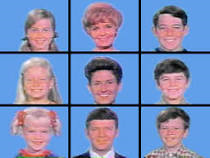The combination of an overly corrupt presidency, headed by a mentally unstable president, combined with largely unaccountable 24-hour internet and cable TV commentaries has transformed American journalism cable TV beyond recognition.
Traditional reporting, defined in the book Reporting for Journalists (Chris Frost, 2003; London: Taylor & Francis) as “a duty to seek the truth and present it to readers, and not the truth as statecraft would wish them to know, but the truth as near as he can attain it,” by The Times of London editor John Thadeus Delane (1817-1879), today sounds idealistic. But his point is that there is a difference between politics and politicians,
Some journalism, like sociology, often dwells on the obvious, merely broadcasting things many people know. That is the case with Trump, who many long-time New Yorkers always knew was a publicity hound, real estate developer thug, pathological liar, and womanizer. That was the background story for many of his playboy exploits and publicity stunts the New York tabloids reported on for decades.
But when the subject of this Yellow Journalism was elected president, it called for a more reflective type of reporting that involved some convenient amnesia on the part of some major news outlets. This was compounded by the censorship of corporate journalism and the old-line respect for the office of the president, which was now void and up for grabs.
The overlay for this was the Tower of Babble, AKA social media, and the terrible demands of 24-hour cable TV journalism. By the election of 2017, it was evident that the omnivorous format of 24-hour journalism was already beginning to fray. News broadcasts that pre-dated the introduction of Ted Turner’s 24-hour cable experiment used to be focused on a 30-minute broadcast, often once a day, and supplemented by shorter local news shows at meal hours. This news format worked for decades to inform the American public.

But Ted Turner’s experiment is now off the rails. Cable news shows repeat only a handful of news stories daily and then supplement them with endless panel discussions by commentators, political hacks, propagandists, paid contributors, and social provocateurs. When they appear together, the framed guests look like the opening credits for the Brady Bunch.

What is driving this new form of lower-quality journalism is based on pure speculation. “What ifs” and “Why do you think”-type questions get boring quickly, especially when the pundit and the commentator have no new information. Serious journalism strictly avoids speculation, but not on cable TV. Instead, serious journalism is based on the five “W’s,” the observable and scientifically verifiable who, what, where, when, and why. But that is a different medium with a different set of journalism standards.
Like FOX News, talk radio, odd entertainment networks, and social media all thrive on speculation and its logical offshoot, conspiracy theories. Somewhere in this professional gap between old-line journalism and the newer pressure to entertain and tittle, Trump emerged as a cynical beneficiary of timid journalism that was afraid to call him out as the elected sociopath he became for four long, disgusting years.
In an excellent article, “The Case Against the Media, by the Media,” (New York Magazine, 2016), based on 113 interviews with editors and reporters, the magazine noted that journalism today suffers from the overuse of anonymous sources, an emphasis on speed that results in oversimplification of complex stories, and bad decisions by publishers that caused newsroom employment to suffer. An excellent example of this was CNN’s terrible decision to hire Corey Lewandowski as a “commentator” when, in fact, he was a paid propagandist.
This article covers many angles of contemporary journalism. How it failed miserably to assess the Trump campaign and the mood of the nation, but one of the best summaries came from Jeff Sharlet, magazine journalist and professor of English at Dartmouth, who said, “The ability to report on mainstream politics — that’s what the (corporate media) machine is for. The machine was not made to understand things like Occupy Wall Street or Trump. The machine was not made to understand the sort of Bernie Sanders world. It’s making a solid effort, but even so, you see the machine stumbling.”
This was best said in this same New York article by Michael Hirsh of Politico, who gave this grave assessment:
“I see this in some ways as the tail end of a long arc of history. We started with a few authorized outlets that spoke authoritatively, and that’s largely gone with the wind. The Times and the Post are still around, but there’s a question of how much they dictate the agenda how they used to. In the meantime, 10,000 weeds have bloomed on the internet, sites where like-minded people gather and get a lot of their information, much of it just garbage. There’s no natural anchor.
“And, of course, a guy like Trump comes in and exploits that to the hilt. He ran roughshod over a traditional media that still sees itself as the platform for authoritative news but is actually used less and less for that. If Trump is elected president, that will underline just how irrelevant we’ve become.”
Legitimate, contemporary journalism may also have reached its boundary. In the article “Journalism in the Age of Trump” (The Nation, August 13, 2018), author Michael Massing writes:
“In the end, Trump is both the product and the servant of an entrenched system—one that news organizations generally shrink from challenging. Why is that? Because writing about the way things really work would endanger journalists’ access to sources? Because it would provoke an outcry from powerful people? Because it wouldn’t produce enough traffic?”
So maybe the electorate knows how contemporary government works. Today, the U.S. is a corporate democracy, not one that responds to the voters. If it did, the government would be more liberal and Democratic since Republicans are a numeric minority nationwide.
But from the media perspective, what fills this void?
Certainly not social media, community institutions, or public education.
The best we can do is rely on common sense and make decisions based on your family’s long-term interests, including those that benefit the community.
Good journalism is still recognized and will survive, but authentic, professional media outlets will have to a better job at educating their viewers and readers about the steps they take to make a quality product. In the end, quality journalism will survive and thrive.











